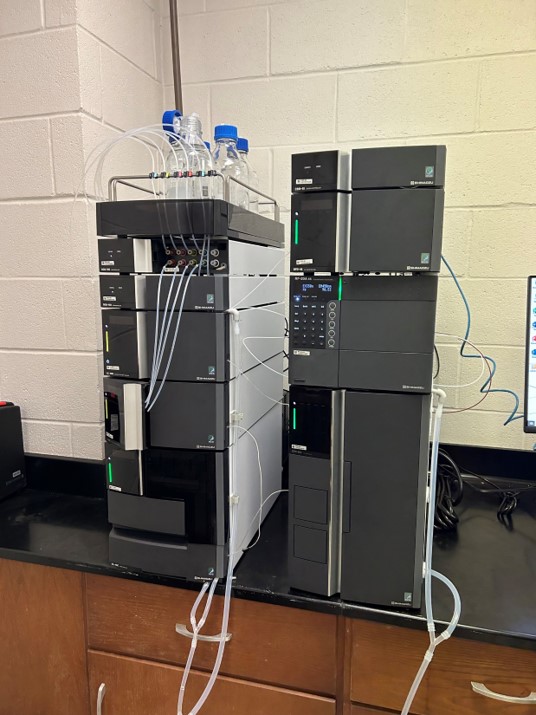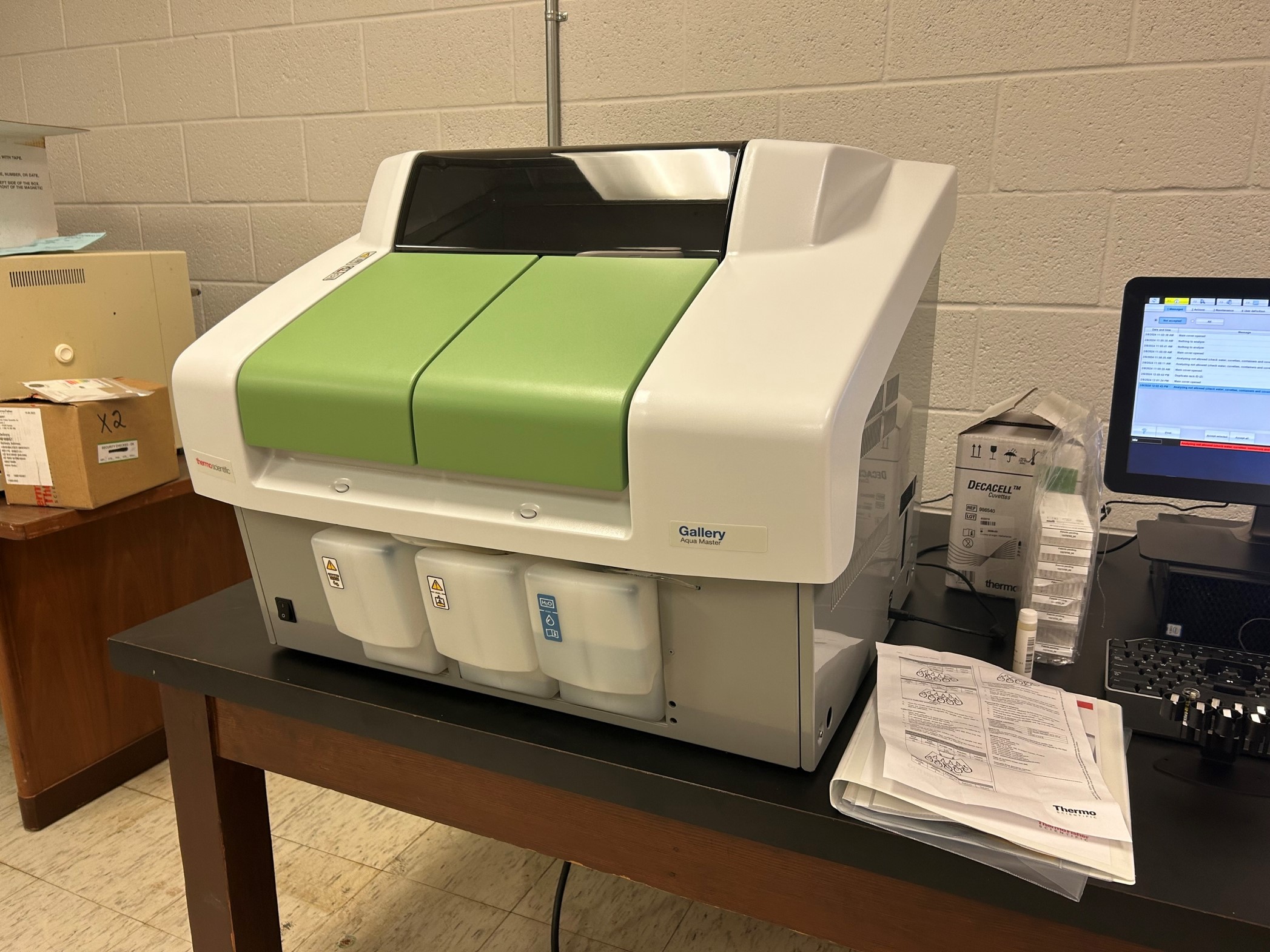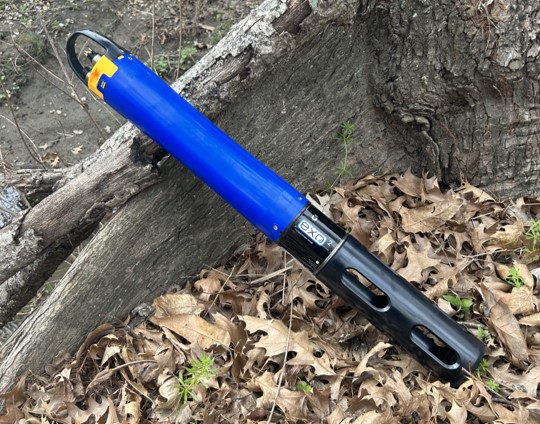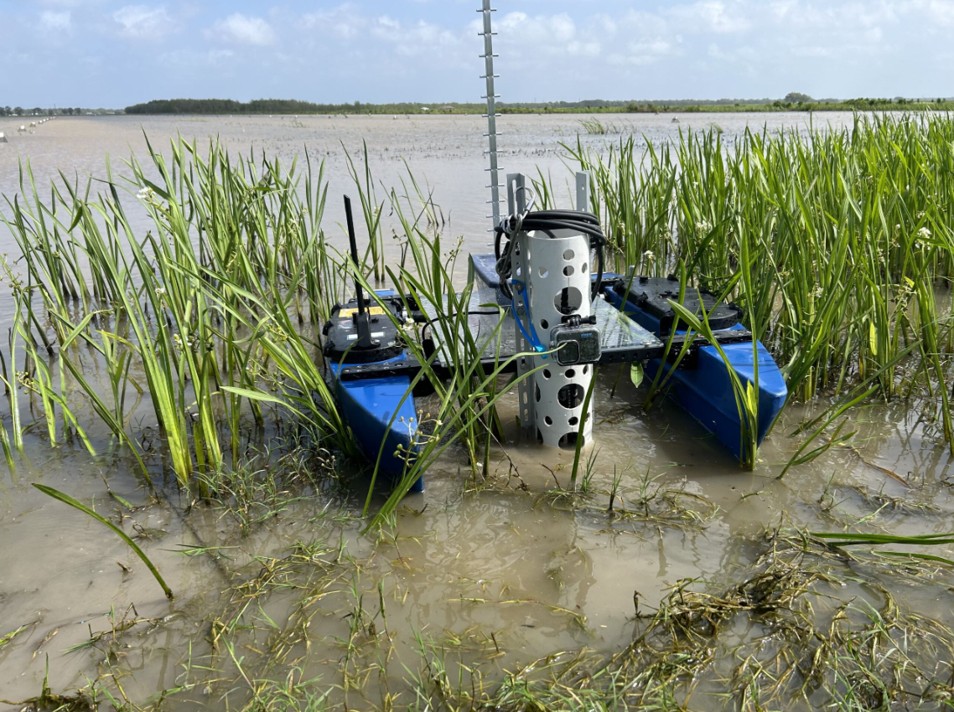Instruments
The water quality extension lab is equipped with numerous instruments to identify and characterize chemicals from an array of environmental systems. Our team focuses on building methods for targeted water quality parameters to inform stakeholders and guide extension-based recommendations for practical applications of waste and wastewater. Our team is always on the lookout for new opportunities in nutrient runoff, wastewater effluent, and non-hazardous agricultural waste to explore with our instrument capabilities.

This innovative instrumentation is a unique optical spectrometer used to study dissolved organic matter (DOM). By utilizing this technology, the water quality extension lab will be fingerprinting DOM to understand parent sources materials and decomposition pathways in environmental systems. The instrument acquires a three-dimensional matrix of the fluorescence excitation and emission spectra, called an Excitation Emission Matrix (EEM). These are translated using Horiba's Absorbance-Transmission Excitation Emission Matrix or A-TEEM software to produce statistically validated datasets.
This instrument was funded by the USDA Equipment Grant Program to enhance the university's capability to provide innovative analysis for water quality in the state.

This instrument provides analytical precision chemical detection with customizable
method development applications for a diverse range of matrices. With both UV and
fluorescence detectors, this HPLC provides a range of analytes for detection. The
focal point of current research revolves around the sorption of anthropogenic contaminants
to non-hazard industrial waste to generate value-added products.
This instrument was aided by the Shimadzu University Equipment Grant Program for partial funding and to enhance the lab's ability to provide analytical-grade research for water quality in the state.

This instrument is designed to increase efficiency for photometric and electrochemical analysis for water quality parameters including (but not limited to): corrosive indicators, organic acids, and nutrients. The colorimetric identification makes the analysis of agricultural runoff and wastewater effluents easily executed for rapid detection. The research and extension data generated from these instruments inform stakeholders of opportunities in water management from their farm or facility.

This deployable instrument is a water quality monitor with 7 sensor ports allowing for advanced metrics to be taken in the field. The water quality extension lab has multiple EXO devices used for field-based research and extension to survey parameters including dissolved oxygen, ammonium, nitrate, pH, turbidity, and temperature. The EXOs are currently being used in partnership with rural municipal facilities to optimize water discharge parameters and energy usage at their facility.
